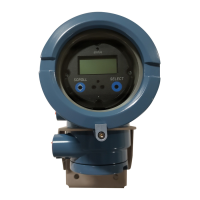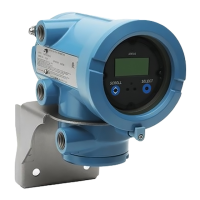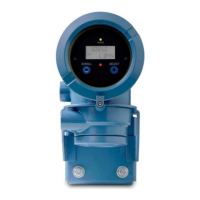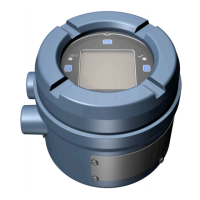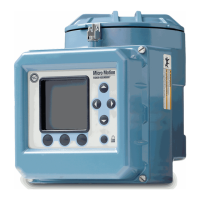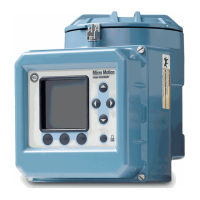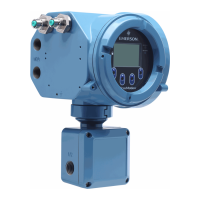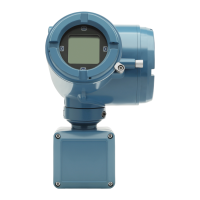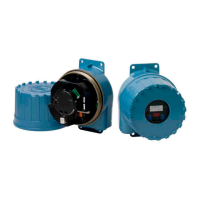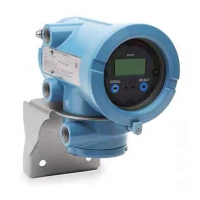142 Micro Motion Series 1000 and Series 2000 Transmitters
Troubleshooting
Table 12-6 Process variables problems and possible remedies
Symptom Cause Possible remedy
Steady non-zero flow rate under
no-flow conditions
Misaligned piping (especially in new
installations)
Correct the piping.
Open or leaking valve Check or correct the valve mechanism.
Bad sensor zero Rezero the meter. See Section 5.5.
Bad flow calibration factor Verify characterization. See
Section 6.2.
Erratic non-zero flow rate under
no-flow conditions
RF interference Check environment for RF interference.
See Section 12.14.4.
Wiring problem Verify all sensor-to-transmitter wiring
and ensure the wires are making good
contact.
Incorrectly grounded 9-wire cable (in
9-wire remote installations and remote
core processor with remote transmitter
installations)
Verify 9-wire cable installation. Refer to
Appendix B for diagrams, and see the
installation manual for your transmitter.
Vibration in pipeline at rate close to
sensor tube frequency
Check environment and remove source
of vibration.
Improper sensor grounding (T-Series
sensors only)
Verify that the sensor is grounded to
earth ground.
Leaking valve or seal Check pipeline.
Inappropriate measurement unit Check configuration. See
Section 12.20.
Inappropriate damping value Check damping configuration.
Slug flow See Section 12.17.
Plugged flow tube Check drive gain and tube frequency.
Purge the flow tubes or replace the
sensor.
Moisture in sensor junction box Open junction box and allow it to dry.
Do not use contact cleaner. When
closing, ensure integrity of gaskets and
O-rings, and grease all O-rings.
Mounting stress on sensor Check sensor mounting. Ensure:
• Sensor is not being used to support
pipe.
• Sensor is not being used to correct
pipe misalignment.
• Sensor is not too heavy for pipe.
Sensor cross-talk Check environment for sensor with
similar (±0.5 Hz) tube frequency.
Incorrect sensor orientation Sensor orientation must be appropriate
to process fluid. See the installation
manual for your sensor.
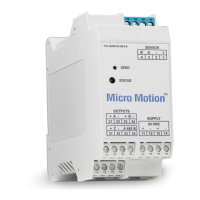
